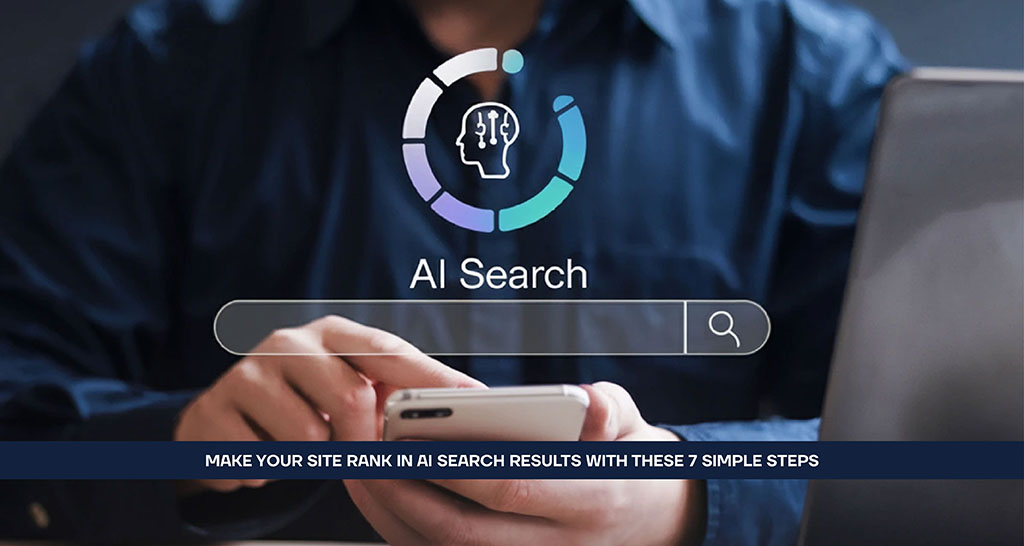As AI-powered search tools like ChatGPT and Google Gemini continue to reshape how users explore information, marketers and content creators need to evolve their strategies to stay visible. Unlike traditional search engines, the AI models work differently; they require strategies in consumer intent data, understanding what people search for and how and where they find their answers. In this guide, we will talk about AI-powered search engine marketing in detail with step-by-step instructions.
Quick Overview of AI Search
The traditional search engines were mainly focused on keyword matching; the AI search uses large language models to understand user intent and present more comprehensive responses, closely aligned to the users’ actual needs. These results are present in the form of AI overviews at the top of Google’s search results, either above or below the ads.
AI is trying to revive the spirit of early search. Its focus is not on the loudest and richest or most frequent but on the most valuable wins. AI Overviews mainly revolve around the formula of delivering accurate, relevant, and trustworthy information.
Here is the stepwise process for AI Search Marketing:
Step 1: Understand AI Search Algorithms
AI-powered search engines depend on advanced natural language processing to interpret context, semantics, and user intent, which is different from basic keyword matching. AI-based search engines prioritize the content, aligning with the intent of user queries. Next, use schema markup to support the search engine to understand and categorize your content. Consider including a well-rounded explanation of topics throughout. The more insightful your content, the more likely it is to be recognized as valuable by AI.
Step 2: Crafts Friendly Content for AI and Human
To rank in AI overviews, try to provide clear, relevant, and valuable content. Before writing, think about the underlying purpose behind any query, including related terms and phrases besides the main keyword to give AI a richer context. Try to write clear and easy-to-read content with short paragraphs, bullet points, and lists.
Step 3: Include Technical SEO Factors
Utilize website audit tools to assess your site’s health and ensure its health. Make your website mobile-friendly, use responsive design, and ensure fast load time to make the user experience better. AI search engines focus on fast-loading pages, compress images to reduce file sizes, enable caching to store static files locally, and also use a CDN to distribute your content worldwide.
Step 4: Harness AI Tools and Modern Trends
Embrace tools like ChatGPT for generating content ideas and drafting engaging and aligned content with an AI algorithm. Boost your content performance with platforms like Ahrefs and Clearscope that provide the required recommendations to improve its alignment with the AI search engine. Additionally, focus on optimizing your content for natural language queries and incorporating long-tail conversational keywords.
Step 5: Build Natural Human Authority
To build a human authority, regularly update your content, publish industry-related content, provide detailed information about the content creators, and, like traditional SEO, have the content linked to or referenced by a reputable website, which can act as an endorsement of credibility. Further, maintain an active social media presence to enhance your site’s authority.
Step 6: Stay Ahead of the Trends
Proactively adapt your content strategy and do content audits to assure your content is updated and optimized, and keep abreast of the latest AI, SEO, and Generative Engine Optimization (GEO). Further, continuously experiment with different content formats and AI SEO strategies to find what works best with AI algorithms. Consider implementing A/B testing to find the most effective approaches and refining your strategy based on data-driven insights.
Step 7: Measure Your Success
Work on AI-specific performance indicators to check your content’s effectiveness. Measure how frequently your content appears in featured snippets through Google Search Content to track and optimize these valuable results. Check the user engagements with bounce rate, time on page, and interactions. Use platforms like Google Analytics, Search Console, and other SEO tools to gain the latest data insights.
Bottom Line
As AI-based search is influencing how users find content, it is important to develop a resilient and AI-focused digital strategy. By following these steps, marketers and business owners can stay visible and relevant in the AI search world and achieve user attention and real engagement.







